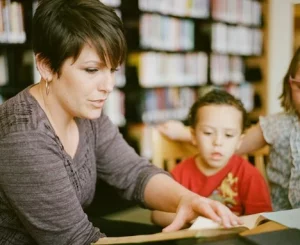Benefits of Using Decodable Books in Kindergarten and First Grade
Wondering what are decodable books for kindergartners and how they can help children read fluently? We have got you covered!
You may have some knowledge about decodable books, especially if you have a preschooler and first-grader at home. They are extremely valuable for children who are first learning to sound out words.
Before getting into the benefits of using decodable books in kindergarten and first grade, we will first explain how they work.

What are Decodable Books?
In order to read fluently, readers have to decode unknown words as they go. Decodable books consist of words that are phonetically decodable. They are the teaching and learning aids that help children make connections between sounds and words.
Decodable books help children practice a particular letter-sound pattern instead of relying on pictures and guessing. These particular books have gained significant attention in education for quite some time now.
They are great for all children. However, they are absolutely essential for children who are starting to learn to read.
The phonics-based text that decodable books for first grade contain is usually based around 1-2 phonics skills. Decodable books are progressive. As basic phonic patterns are taught before third grade, decodable books are seen less in third, fourth, and fifth-grade classrooms.
If your child is an emerging reader, there are many teaching programs that you can enroll them in. 337 Decodable Words are learned in the Reading Teacher Program.
Why Should You Use Decodable Books in Kindergarten and First Grade?

Decodable books for first grade and kindergartens are important because they help emerging readers practice decoding skills. They help children practice phonics patterns.
Let’s take a look at other benefits of decodable books for preschoolers and first graders:
Builds Confidence
Decodable books help emerging readers become confident in their reading abilities. Furthermore, they help them stop depending on others to solve word puzzles for them.
When children apply phonetic skills to connected text, they realize they don’t need to depend on others to help them. This helps them gain confidence and build their interest in reading.
Feeling confident is extremely important for struggling readers. If you want your child to be confident and become a better reader, it’s important that you celebrate their success.
Builds Neuronal Pathways
The opportunity for repeated practice help readers retain new vocabulary to a greater extent and builds neuronal pathways.
When the brain repeats a single word many times, it strengthens neural pathways and offers the comfort of predictability.
Encourages Strong Habits
By gaining the skills to decode unfamiliar words, emerging readers become confident. This discourages bad habits such as guessing words by the picture or based on the first few letters. They also stop skipping over unknown and difficult words and try their best to pronounce and understand the word's meaning.
Helps Taking a Step Towards Fluent Independent Reading
One way to read fluently is to read and reread words. Fluency is identified as one of the 5 pillars of reading, and it’s an outcome of effective decoding. They also help children develop and improve their comprehension skills.
A Final Word
There are many free printable decodable books for kindergarten and first grade. Decodable books encourage strong reading habits and help young readers build confidence. They give them the chance to apply phonics skills that they have previously learned.
They create a sense of motivation and achievement in readers and help them develop good decoding habits. However, do keep in mind that they are only meant to be used during a short window when kids are first starting to learn how to read.
Reading Teacher Reviews and Testimonials:
"My 7-year-old twins have ADD and it's difficult to keep them focused. They love to read the stories and then go back and listen again" Natasha from San Diego
Start Teaching Reading for Free Now!
Access Level 1’s four interactive stories and the accompanying supplemental resources to teach elementary students how to read. No credit card is needed. Join the 42,635 teachers and students using our reading program.
